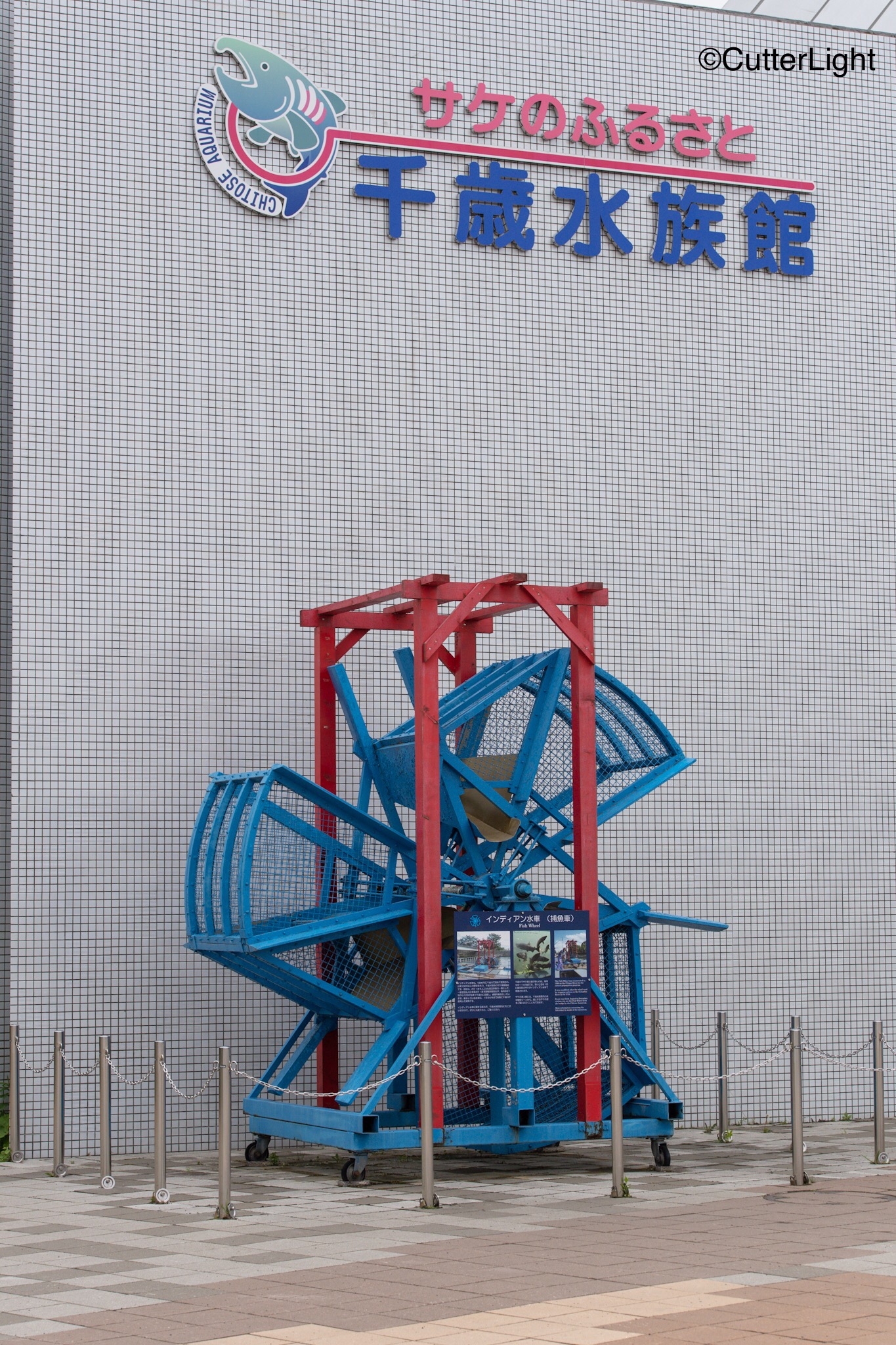
A mosaic of farmlands on the flight into Chitose evoked visions of fresh melons, strawberries, cherries, wines, cheese, and Hokkaido’s famous beef.
Although the city of Chitose, which lies just south of Sapporo, is generally seen as merely an airport stop, it’s a charming city in its own right. We found it to be the perfect place to stage and prepare for our trek around Hokkaido. The local Homac store sells butane camping stove fuel, there’s a beautiful green belt, and – as just about everywhere in Hokkaido – excellent restaurants.

A depiction of the Sapporo Beer Brewery paves the sidewalk outside the Chitose airport.

We quickly discovered that convenience stores such as 7/11 and Lawson are not only convenient (they all have restrooms… clean restrooms), but they feature very good coffee and a variety of tasty prepared foods to quickly fuel up hungry bicyclists.

Bob!? Is that you? We hadn’t seen this character since we were kids… Either we were a lot smaller or he was a lot bigger back then. American-style hamburgers have not been on our menu… and I really didn’t care for the way he was looking at Barbra.

A passerby who works with one of the international airlines that frequents Chitose stopped to talk with us as we assembled our bicycles outside the hotel. He recommended the restaurant Ramai, which specializes in curry soup. Chock full of chicken and vegetables and exceptionally flavorful, we enthusiastically pass along the recommendation.

Keen to check out Hokkaido’s young and growing wine industry, we found Grace Winery open for tasting…

…in addition to haskap berry wine (also known as honeysuckle berry), the winery features whites and reds of German origin as well as Pinot Noir. The grapes at this winery were grown in the Yoichi area, which provided all the incentive we needed to make sure that Yoichi would be a stop on our trek!

At the the Chitose Aquarium (well worth a visit) we had our first encounter with Ainu culture. The Ainu are indigenous to Hokkaido and northern Japan, sharing many traditions in common with the indigenous people of the Pacific Northwest. Here salmon skin footwear is displayed.

Rare and endangered, Itou (Japanese Huchen) are a close relative of taimen – the world’s largest salmonid species. Growing to over a meter in length, there are still fishable populations in some of Hokkaido’s waters, though catch and release is strongly encouraged if not the law of the land.

The Chitose River is remarkably clean and clear despite running through an urban area. It receives a strong run of Chum Salmon, which each fall are caprtured by this Pacific Northwest style fish wheel for the local hatchery. In late spring and early summer, visitors to the aquarium can participate by releasing a cup’s worth of salmon fry into the Chitose River, giving them a bit of ownership in maintaining healthy populations of salmon and a healthy river.

Caddisflies and May Flies were coming off the river the morning we walked its banks.

These angles caught a brown trout – right in the heart of the city!

While this colorful finch sang his heart out.

Although the cherry blossom were finished, Azeleas were still in glorious bloom – including colors we’d never before seen. Across the river, an aosagi (gray heron) is perched on a rock, no doubt anticipating making a meal of the many Japanese Dace that populate the river.

Although the Japanese express great concern regarding the several hundred higuma (brown bears) that inhabit the island, of far greater danger are the huge suzumebachi (Japanese Giant Hornet) which account for a number of deaths each year in Japan. We found this one beginning a nest and uneasily got this capture before backing off.

We enjoyed a wonderful, stress-free stay at the Ana Crowne Hotel in Chitose. Hotel staff were extremely accommodating to our unusual needs – even allowing us to store our large bicycle boxes with them until our return in August.



















